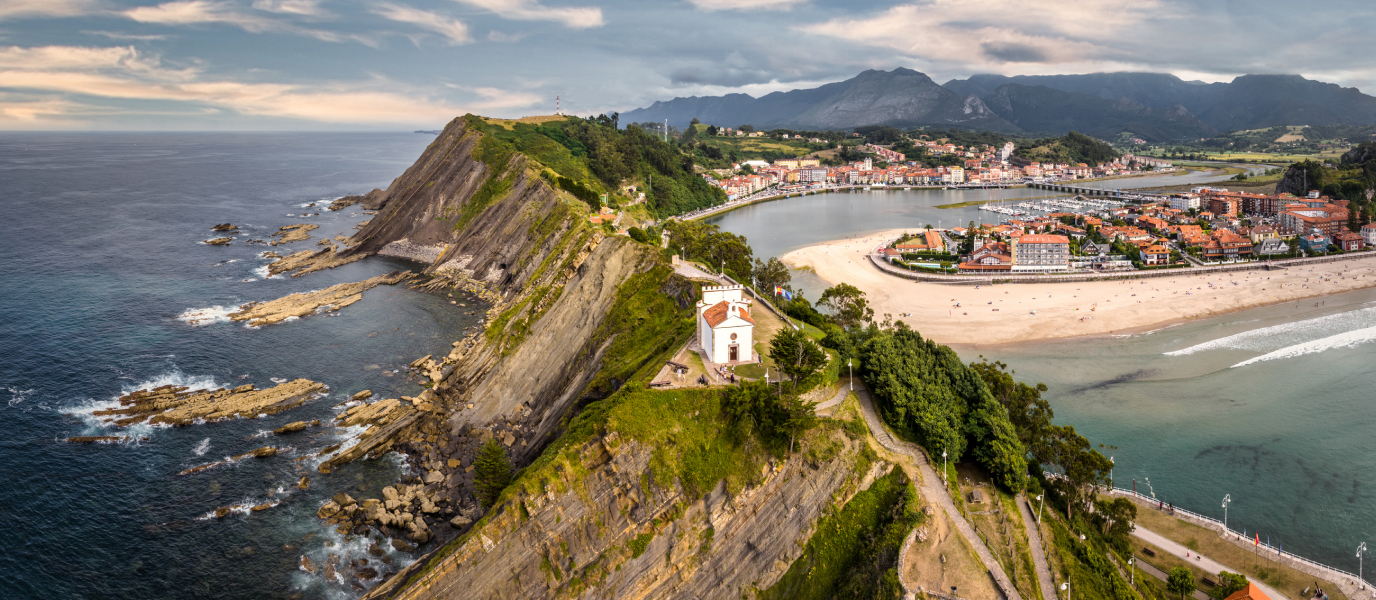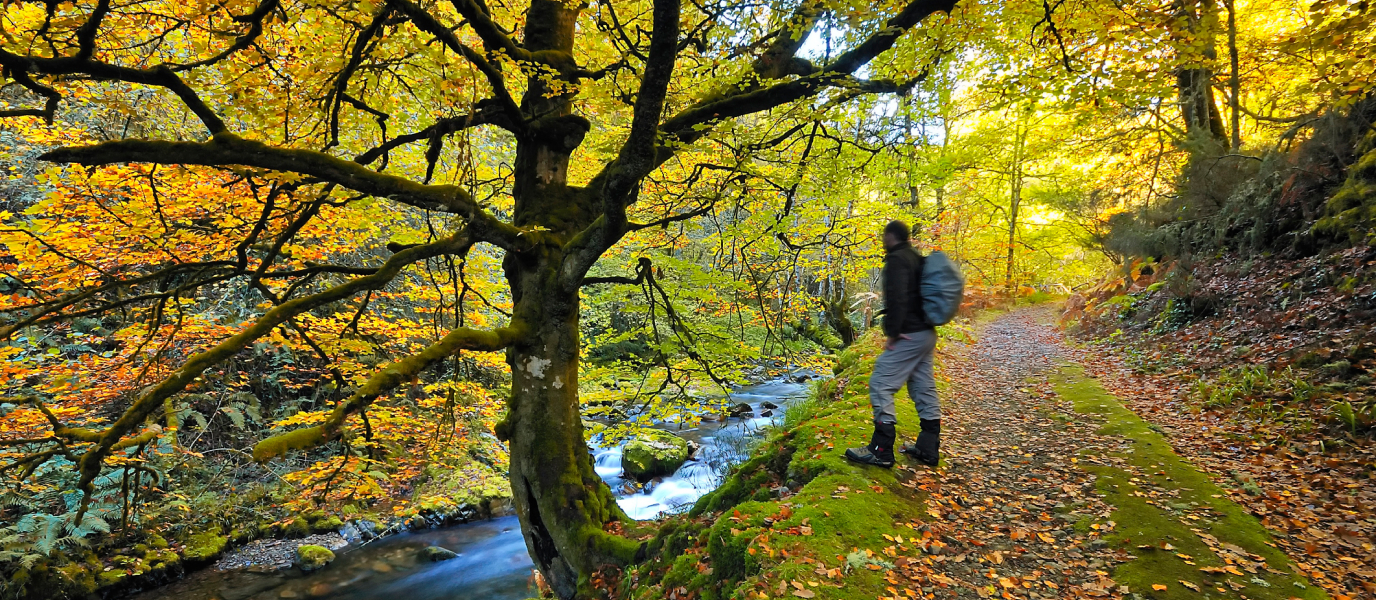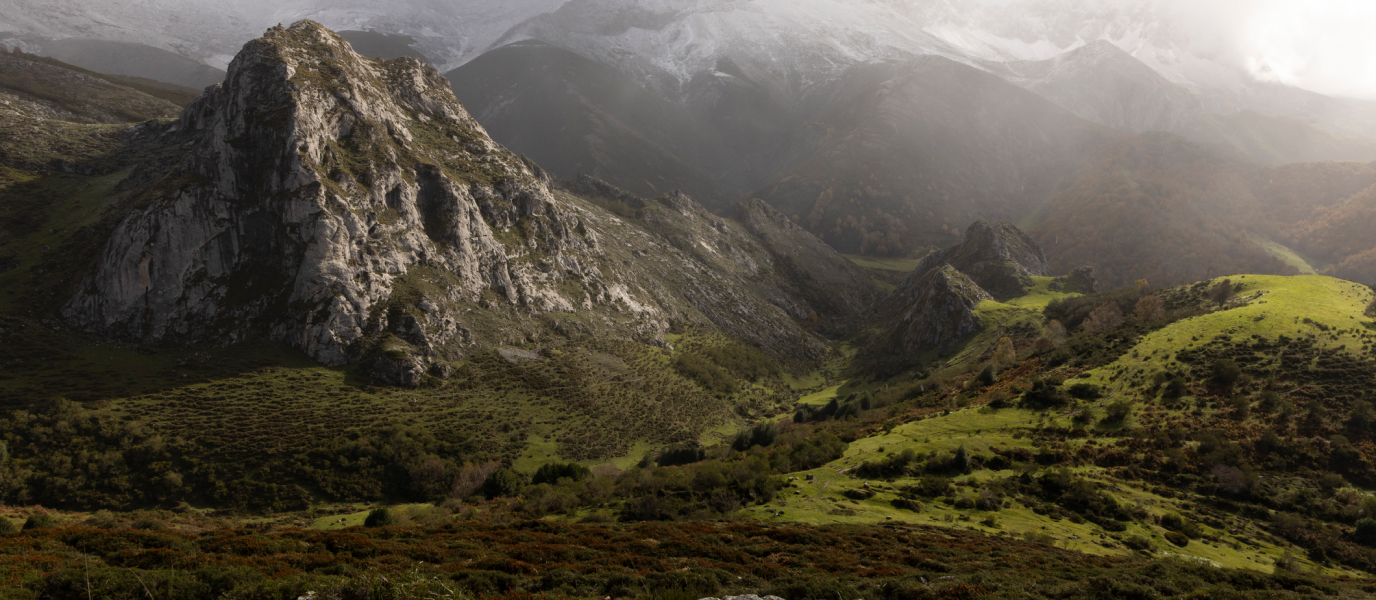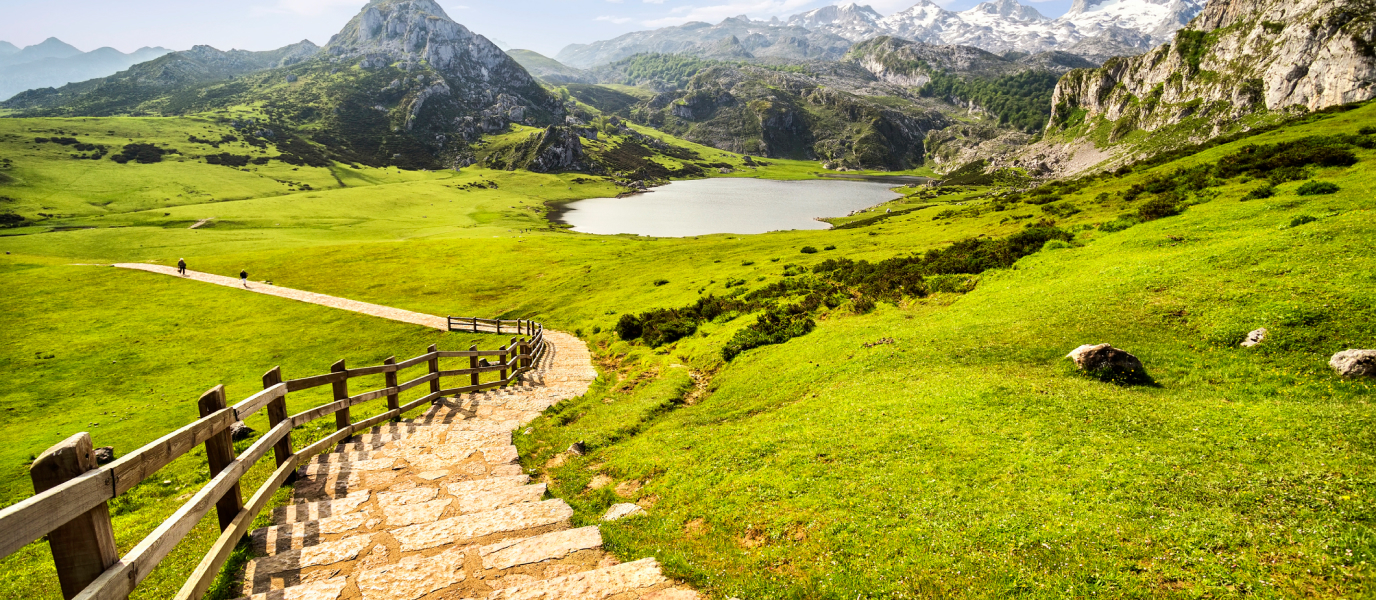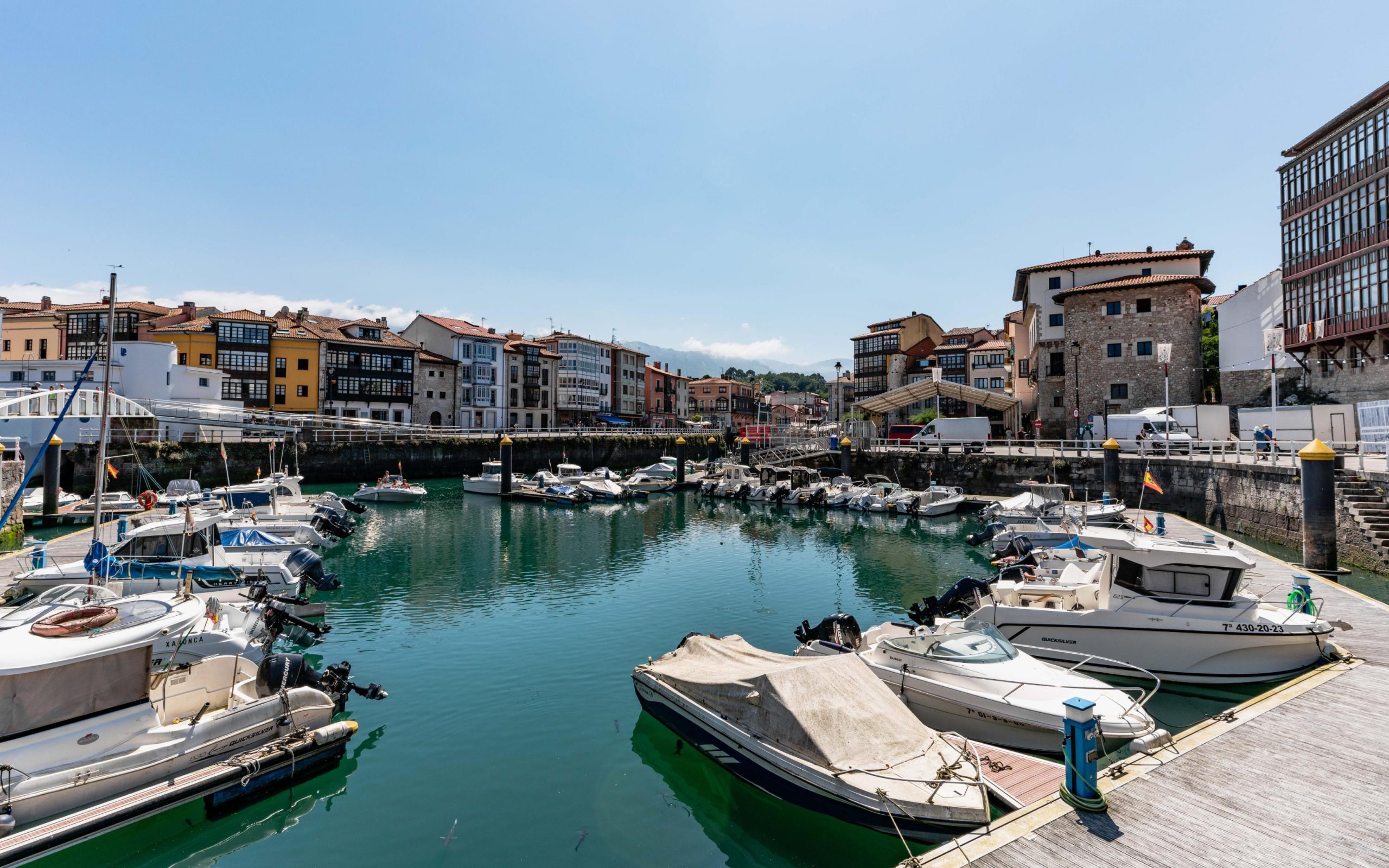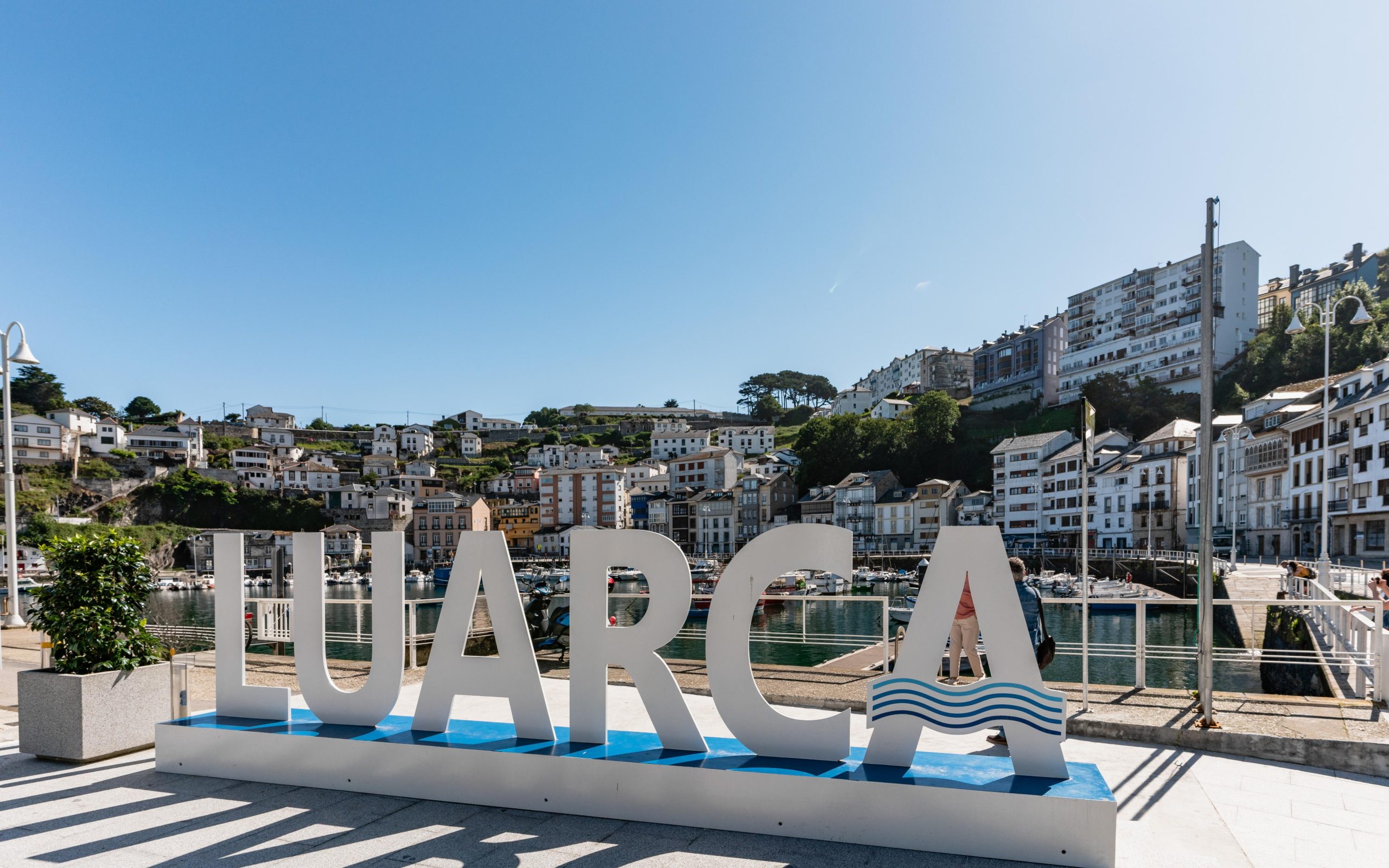The Cantabrian Sea has spent the last few millenniums gently carving the 30-mile-long coastline of Llanes to offer us some of nature’s most spectacular landforms. Come discover the karstic blowholes, sinkholes, arches and cliffs that make up the coast, alongside dreamlike beaches that will transport you far away from the hustle-and-bustle of city life.
The well-conserved, protected natural environment allows visitors to step into one of the most picturesque settings around – no Instagram filter required. The sea’s infinite shades of sparkling blues set against the strikingly verdant meadows, where cows can be found leisurely grazing, set the backdrop as you settle in for a relaxing day at the beach. Most of the beaches are located within the protected area so you’ll need to be on foot to gain access, but the walk itself affords sensational views.
The beaches of Torimbia, Barro and Poo may be the most acclaimed beaches, but they are just the tip of the iceberg. The region is home to a total of 32 beaches and that number can even double when the ebb and flow of the tides is taken into account. How is that possible? The beaches become almost unrecognisable when high tide rolls in. Low tide may be the best time to visit but stick around to see the awe-striking transformation. You won’t be disappointed.
Llanes’ top beaches
Playa de Torimbia: unspoilt beauty
Playa de Torimbia is located just 10 km west from the town of Llanes. This spectacular crescent-shaped, wild beach is nestled between Punta Pestaña and Cabo Prieto. The vast powdery-white sand stands out even more against the verdant backdrop and crystalline sea water. Though especially popular among nudists, bathing suits are becoming more and more the norm. You can leave your vehicle in the clifftop car park and take in the gorgeous views before you undertake the 1.3-km long hike to the beach.
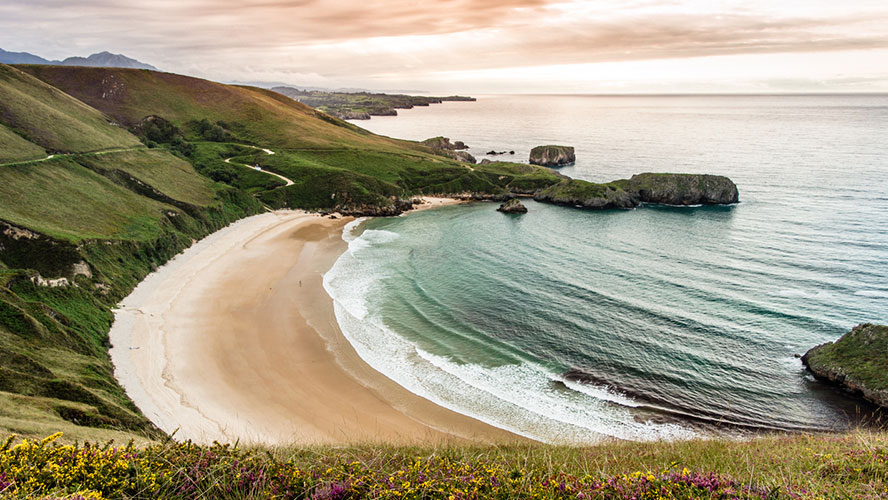
Playa de San Antolín: a surfer’s utopia
San Antolín is the next beach to the west and probably the most conventional of the region for its characteristics: the 1200-m stretch of sand sits at the mouth of the Cabras and Bedón estuary, completely unprotected from the sea. Large, perfectly peeling swells make their way to the shoreline, inviting surfers for a ride. A popular spot among amateurs surfers, don’t be surprised to find students from the local surf school out in the water.
Playa de Gulpiyuri: a miniscule inland beach
From the San Antolín beach carpark, take the 900-m trail to the tiny, hidden gem of Playa de Gulpiyuri. Thousands of years of erosion carved out this inland beach among the limestone cliffs. No surprise this secluded, 30-m long beach is the most famous of Spain for its astounding beauty. It is also probably one of the most difficult to locate because of its size. A key indication you are near is the bellowing roar of the waves as high tide rolls in. During low tide, a shallow pool forms, inviting you for a dip. You may not be alone in wanting to enjoy this stunning beach, but its astounding beauty will be more than rewarding.
Gulpiyuri is situated halfway between San Antolín and Playa de la Huelga – a long, narrow stretch of sand that extends 180 m into the San Cecilio River estuary. Just opposite the impressive rocky islet of Castro de las Gaviotas, this beach is surrounded by wild vegetation and can become quite crowded during school holidays.
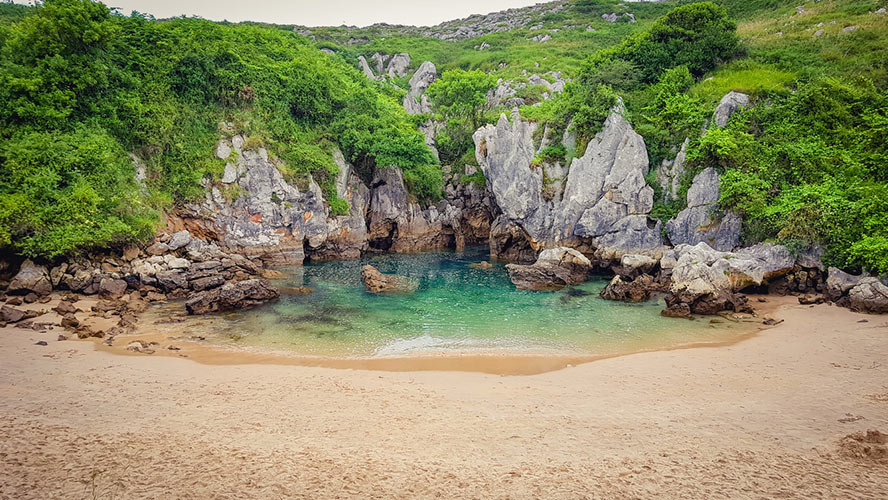
Three wonders in the westernmost part of Llanes
The westernmost part of Llanes boasts three gorgeous stretches of beach well-worth visiting. The first, Cuevas del Mar, is an inlet located at the mouth of Nueva River (between the municipalities of Picones and Villanueva), and is also locally known as Playa Nueva. Dotted with caves and bounded by soaring cliffs, you’ll enjoy incredible views of the surrounding area and even, the towering Picos de Europa on clear days.
Take the scenic walk west from Cuevas del Mar into the municipality of Villanueva to explore the next wonder: Playa del Canal. This tiny 25-m wide beach forms a narrow fjord, bounded by karst cliffs, that floods at high tide.
Three kilometres further west (almost double if travelling by car) lies the third wonder, Playa de Guadamía, near the municipality of Llames de Pría. This eucalyptus covered fjord is made up of a stretch of sand at the mouth of the Guadamía River. Take the 10-minute walk to explore the Pría Blowholes. These naturally-formed chimneys are carved out of the cliffs by the sea and release water into the air in the most explosive fashion, reaching 30 m in height! The sound made by the blowholes travels for miles on end.
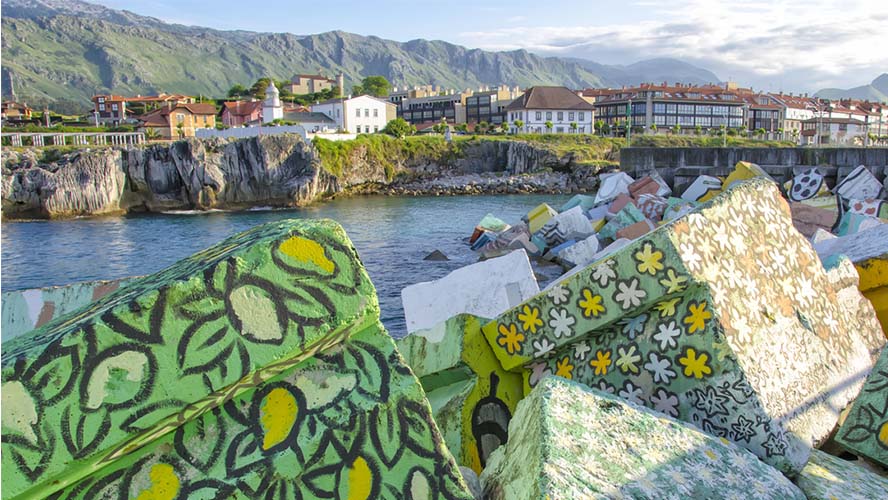
The beaches of Barro, Troenzo, Borizu and Poo
You don’t need to travel very far from Llanes to enjoy wonderful beaches. Head just a few kilometres west to discover the beaches of Barro, Troenzo and Borizu. These beaches line up one after the other along the coast and share some common features: they are discretely secluded and are protected by different-sized rocky islets, jutting out of the sea. The 300-m long, shell-shaped Playa de Barro is a popular destination among beach lovers for its beauty. It is also a popular film location.
Playa de Troenzo lies just east from Playa de Barro. This quaint, 180-m wide beach looks out onto a tiny odd-looking rocky islet. The beach is bounded by towering cliffs and underwater caves.
Continue east to explore Playa de Borizu. This semi-natural beach has somehow escaped the urban development mayhem. Climb up to the highest point of the cliff to take in the spectacular scenery from the viewpoint. No surprise it has also become a top filming location.
Just at the edge of the municipality of Llanes lies the stunning Playa de Poo. This funnel-shaped sandy enclave stretches inland for a couple of hundred metres. A sparkling pool forms when the tide rises. At low tide, the crescent-shaped beach is completely protected from the surf and its beauty can be fully taken in.
Playa de Toró is practically located in the town centre of Llanes. It is one of the most frequented beaches in the region not just for its unique beauty and rock formations, but also because of the iconic scenes from The Grandfather, the 1998 Spanish film directed by José Luís Garci. Although an urban beach, this rocky-pinnacled, shell-shaped, 200 m stretch of sand still retains its natural properties.



































































